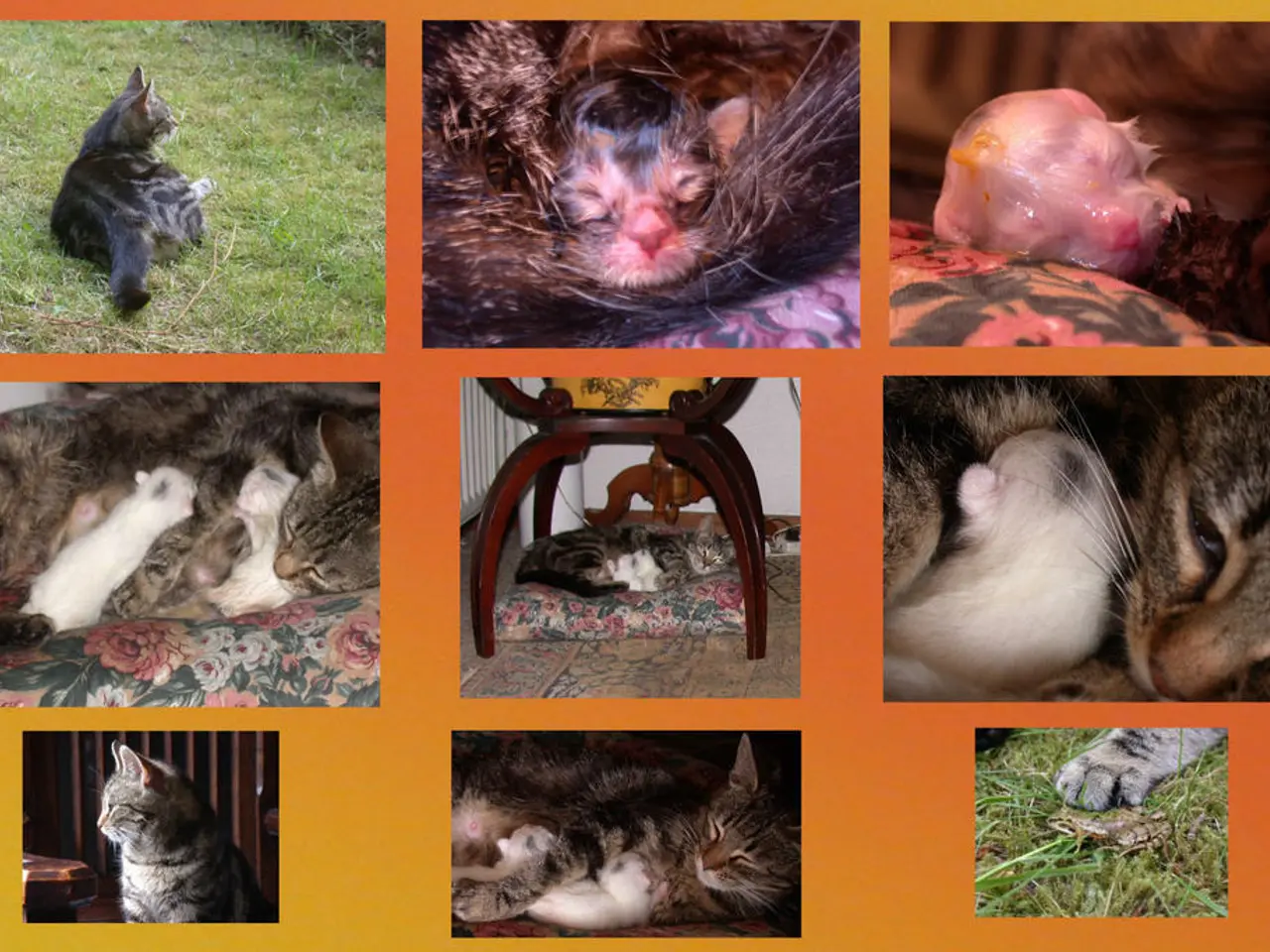Rising Threat of Zoonotic Diseases: Understanding the Causes and Mitigation Strategies
Global Health Impact through Animal-Human Interactions: Unveiling the Impact of Zoonotic Diseases
Zoonotic diseases, infections transmitted from animals to humans, are becoming increasingly common, posing a significant threat to global health and economies. These diseases, caused by pathogens such as bacteria, viruses, fungi, or parasites, have been responsible for numerous outbreaks in recent decades, with around 75% of emerging infectious diseases being zoonotic in nature [1].
Several key factors contribute to the increasing frequency of zoonotic diseases. Urbanization and deforestation, for instance, bring humans and livestock into closer contact with wildlife reservoirs, increasing the risk of disease transmission [1]. Climate change also plays a role, altering animal migration patterns and expanding the habitats of disease-carrying vectors like mosquitoes, thereby increasing the geographical range and seasonality of diseases [1][3]. Higher population densities of both humans and livestock facilitate the spread of pathogens, making zoonotic diseases more likely to occur [3].
To mitigate the increasing frequency of zoonotic diseases, several strategies can be employed. Enhancing disease surveillance and monitoring systems can help in early detection and rapid response to outbreaks [5]. Implementing public health measures such as quarantine, travel barriers, and improving hygiene practices can reduce the spread of zoonotic diseases [1]. Developing and distributing effective vaccines can significantly reduce the impact of zoonotic diseases [4].
Promoting sustainable land use that minimizes deforestation and maintains ecological balance can reduce the risk of zoonotic transmission [1]. Efforts to reduce greenhouse gas emissions and mitigate climate change can help in stabilizing ecosystems and reducing disease emergence [3]. Encouraging international cooperation and public awareness about zoonotic diseases can improve preparedness and response to outbreaks [2].
Protecting natural ecosystems and wildlife habitats reduces the need for animals to move into human settlements, helping to prevent outbreaks of diseases [6]. Better sanitation and hygiene practices can help reduce the risk of zoonotic disease transmission, especially in areas where humans and animals interact closely [7].
Zoonotic diseases have significant consequences for human health, including fatalities, long-term health effects, and economic disruption. Changes in weather patterns due to climate change alter the distribution of animal species and vector organisms, creating new opportunities for disease transmission [1][3].
With global travel and trade, zoonotic diseases can spread quickly, leading to widespread outbreaks in regions far removed from the original source [8]. When workers become sick due to zoonotic diseases, productivity declines in industries such as agriculture, tourism, and manufacturing [9].
In recent decades, the frequency of zoonotic disease outbreaks has increased significantly. Examples of zoonotic diseases include COVID-19, Ebola, rabies, and avian influenza [10]. Preventing the spread of zoonotic diseases requires a multi-faceted approach that involves various stakeholders and strategies such as improved sanitation, wildlife conservation, public health education, surveillance and monitoring, and global cooperation [11].
As the global population rapidly urbanizes, bringing humans into closer contact with wildlife and domestic animals, the risk of zoonotic disease transmission increases [12]. The illegal and legal trade of wildlife for food, medicine, and pets introduces a variety of species to new environments, increasing the chances of cross-species disease transmission [13].
In conclusion, understanding the factors contributing to the increasing frequency of zoonotic diseases and implementing comprehensive mitigation strategies is crucial in reducing the risk of outbreaks. By working together, we can protect our health, economies, and ecosystems from these threats.
References: [1] World Health Organization. (2020). Zoonotic diseases. Retrieved from https://www.who.int/news-room/fact-sheets/detail/zoonoses [2] Food and Agriculture Organization of the United Nations. (2020). One health. Retrieved from https://www.fao.org/onehealth/en/ [3] Centers for Disease Control and Prevention. (2020). Climate change and health. Retrieved from https://www.cdc.gov/climateandhealth/index.htm [4] World Health Organization. (2020). Vaccines. Retrieved from https://www.who.int/topics/vaccines/en/ [5] World Health Organization. (2020). Surveillance and outbreak response. Retrieved from https://www.who.int/health-topics/surveillance-and-outbreak-response#tab=tab_1 [6] World Wildlife Fund. (2020). Wildlife conservation. Retrieved from https://www.worldwildlife.org/topics/wildlife-conservation [7] World Health Organization. (2020). Personal hygiene. Retrieved from https://www.who.int/news-room/fact-sheets/detail/personal-hygiene [8] World Health Organization. (2020). International travel and health. Retrieved from https://www.who.int/ith/en/ [9] World Bank. (2020). The economic costs of pandemics. Retrieved from https://www.worldbank.org/en/topic/health/brief/the-economic-costs-of-pandemics [10] Centers for Disease Control and Prevention. (2020). Zoonotic diseases. Retrieved from https://www.cdc.gov/onehealth/basics/zoonotic-diseases.html [11] World Health Organization. (2020). Prevention and control of zoonotic diseases. Retrieved from https://www.who.int/health-topics/zoonoses#tab=tab_2 [12] World Health Organization. (2020). Urbanization. Retrieved from https://www.who.int/news-room/fact-sheets/detail/urbanization [13] World Wildlife Fund. (2020). Wildlife trade. Retrieved from https://www.worldwildlife.org/topics/wildlife-trade
In the realm of health and wellness, the escalating frequency of zoonotic diseases, such as COVID-19, Ebola, rabies, and avian influenza, is a significant concern for science as these diseases may lead to potential health-related catastrophes and economic disruption. Mitigating this threat necessitates a holistic approach rooted in strategies like improved sanitation, wildlife conservation, public health education, surveillance and monitoring, and global cooperation, as well as efforts to reduce greenhouse gas emissions, promote sustainable land use, and protect natural ecosystems and wildlife habitats.




